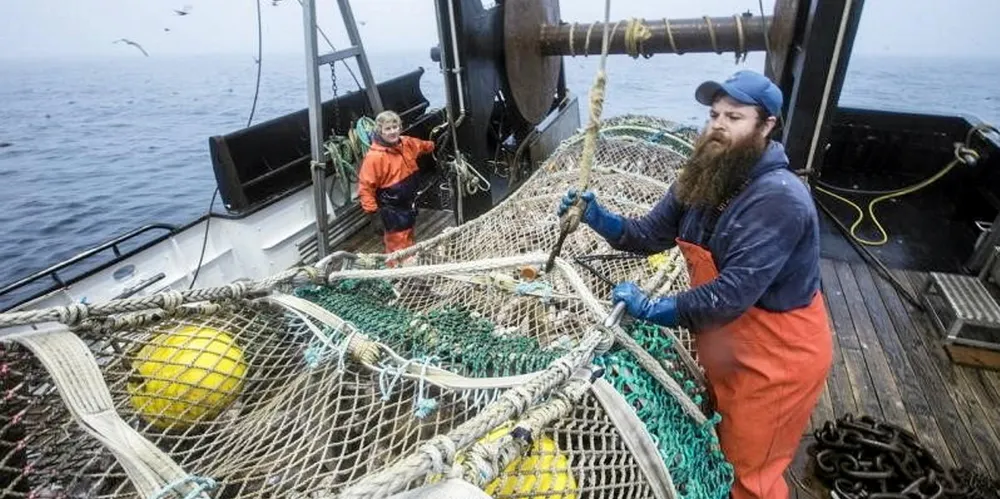Critics slam 'renegade' US regulator for setting Oregon offshore wind energy lease areas
Fisheries, legislators, and Tribal nations claim their concerns were ignored by Biden administration

Federal offshore energy regulator Bureau of Ocean Energy Management (BOEM) announced the finalisation of wind energy areas (WEAs) in Coos Bay and Brookings in the resource rich area near the state’s southern boundary with California.
Though hailed by the industry as significant progress towards reaching the Biden administration’s goal of 15GW of floating wind capacity by 2035, critics slammed BOEM for what they claimed was its deeply flawed process.
“BOEM is a rogue federal agency pushing a dangerous agenda largely unchecked,” said Heather Mann, director of the Midwater Trawlers Cooperative, an Oregon-based fisheries association.
“BOEM will stop at nothing until our oceans are littered with wind turbines and all just to meet an arbitrary political deadline.”
Deep Blue Pacific, a tie-up between French oil major TotalEnergies and Irish outfit Simply Blue focused on development of floating wind in the US northwest, proposed a pair of floating projects with 3GW of capacity in 2022.
Political criticism
Mann's criticisms are reflected by a bipartisan group of Oregon state legislators.
“Coastal community members and individuals tied to the fishing industry have overwhelmingly spoken with great opposition towards offshore wind. These concerns have been echoed by marine scientists, engineers, environmentalists, tribes, and coastal municipalities. We cannot move forward with offshore wind in Oregon until the needs and concerns of these groups have been addressed,” the legislators said.
Mann said authentic engagement with BOEM has been non-existent. “BOEM is pitting renewable energy against sustainable food production.”
Oregon’s Tribal nations share these concerns. The Confederated Tribes of the Coos, Lower Umpqua & Siuslaw Indians condemned BOEM for neglecting to consult them on its WEA decision and for the risks offshore wind development brings to Tribal members.
Council chair Brad Kneaper said the Tribes had “serious concerns for the environmental impacts that may occur as a result of this development.
“BOEM is proceeding without seriously considering or understanding the impacts of wind energy development,” said Kneaper. “The Tribe will explore all options to ensure that its concerns are addressed in this process.”
Widespread opposition
Similar pushback is already emerging for projects newly awarded in New Jersey and New York, despite development occurring farther out to sea in the New York Bight WEA, most of which are at least more than 27 miles (43 km) from shore, beyond visibility of coastal residents.
A range of grassroots organisations, many with links to right wing political groups and fossil fuel interests, have arisen in opposition to project development in the Northeast. The nation’s first commercial-scale offshore wind farm, the 800MW Vineyard Wind 1 currently under construction off Massachusetts, has been the target of at least four lawsuits, all of which have been dismissed in federal court.
Most of the parties are appealing dismissal of their suits.
Meanwhile, an ongoing spate of whale strandings that has left dozens of the massive marine mammals dead particularly in the Mid-Atlantic has galvanised sector opposition.
While most stranded whales showed signs of vessel strikes, a growing risk as shipping to the New York harbour has risen nearly 40% since 2021, sector critics claim that acoustic geophysical surveys of lease areas damage whale hearing, disabling their ability to safely navigate and leading to ship collisions.
Local opposition can be more than just a headache for the offshore wind industry and was a major factor in Orsted’s decision to pull the plug on 2.25GW of project capacity in New Jersey after it was unable to obtain onshore construction permits from local communities and Cape May County, according to CEO Mads Nipper.
“Even though at the time they didn't seem critical, there were a couple of local construction permits that turned out to be more challenging and a bigger risk for the project than we had assumed,” Nipper said during a recent investors day where he discussed the developer’s decision to scrap its Ocean Wind 1 & 2 arrays.
Possible negotiations
While BOEM has held extensive stakeholder engagement over the past year and extended comment periods during the process to establish the WEAs, “holding meetings and taking feedback and then disregarding the feedback is not authentic engagement,” Mann said, an assertion echoed repeatedly by BOEM’s Oregon critics.